What is it like to use an Altitude Tent?
I have used altitude training as a cyclist for years.
Firstly a little background on me. My name is Philip Cooper and I was a British Cycling Elite license level
cyclist for road racing and off road racing. I raced at international World Cup level for elite men at the Olympic discipline of cross country mountain biking. At my best I was ranked 7th in the elite mens national rankings for this Olympic sport and got 58th in a UCI World Cup, along with a second place at the Irish National Championships (second to Robin Seymour 4 x Olympian and general good guy). I was the UK regional champion and series winner. I have raced many cycling greats including Giro D'Italia winner Ryder Hesjedal. Tour de France king of the mountains polka dot jersey wearer Michael Rasmussen and many other Tour de France riders. I personally used a Hypoxico altitude tent over the course of 4 years while I was racing.
This article documents my experiences of using altitude tents as a racing cyclist. I have never been mountaineering but assume they are of as much use.
The first thing I must stress is setting the tent up. The tent shown below is the Deluxe size tent, and we also rent the Queen size tent on which the two poles then cross as two u shapes. Please check pictures if unsure.
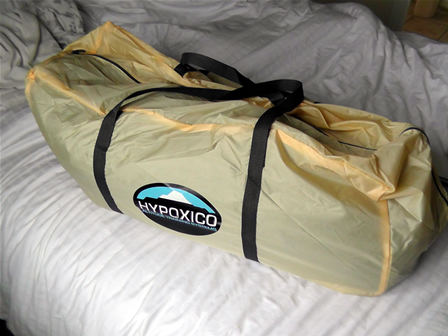
The tent comes in a carry bag. However its the generator that is the more important component.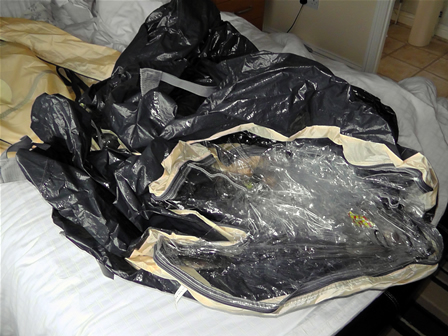
Please try to fold the tents away without screwing up the windows too much. The plastic cracks after time. 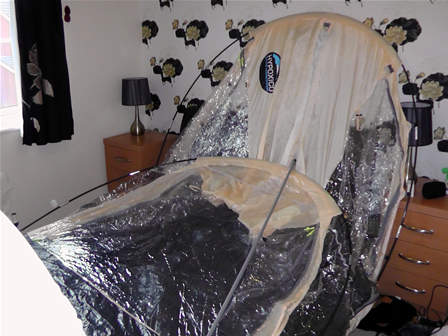
Show in these images is the Deluxe size tent which is larger than the Queen size I used but operates in the same way.
Personally I used the queen size tents and slept alone in them (most of the time :)) at first I just placed my single mattress in the bottom of the tent but at other times my whole single bed in there. You may just about fit a queen size double mattress inside the queen size tent. You could place the tent on your bed with the mattress inside like this. For larger beds we have the Hypoxico deluxe size tent.
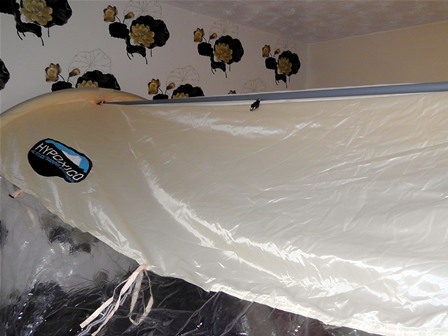
The video below shows the deluxe size tent. I always used the Queen size myself.
You can sleep two people in these tents but personally I used it alone. You cannot use the high altitude adapter with 2 people.
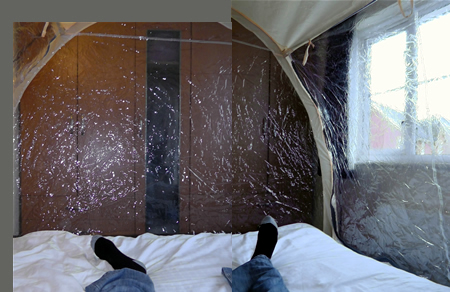
The first thing you will notice when you get in the tent for the first time is the smell of being in a plastic tent. It's not normal being in a tent but you will get used to it. Also the generator supplying the tent seems a little noisy at first and we recommend trying to get that just outside your bedroom door. I also turned the tent on 45 mins before bed time and then got in it as fast as possible to have it up to altitude so to speak from the off.
On a plus note the hepa filter that the air you breath comes through removes pollen so can help with allergies.
I used an over the counter iron vitamin whilst using the tent (start a week before you get the tent). We also recommend trying the tent out before you sleep a night in it. Maybe sit in it in the evening to read and start the tent off at a lowing altitude like 2000ft.
Often we get asked if I noticed any difference from using these tents. I would say yes I noticed it. However most studies show around a 6% gain. Not much but often the difference between winning and losing is less. To try to quantitively measure the reaction to the tent I had my blood tested at medicentre in London Victoria station. (There are medicentres all around). For around 80 they can give you a blood test which measures amongst other things your haematocrit (red blood cell percentage of your blood). Often one of the reactions to low O2 or hypoxia is that your body will produce more red blood cells so this is a fairly easily measure able thing to test. There are more adaptations to altitude but this is fairly easy to measure.
So onto using the tent. I started off sleeping in the tent 8 hours per night. I spent around 6 weeks slowly ramping up the simulated altitude from 2000 to 13,500 ft or around 12.9% O2. (Sea level is 20.9% 02).
I then kept the tent as high as I could for the next 5-6 weeks and had my blood tested again. My Haematocrit had risen so I was happy the tent had made some changes to my body. We must stress that you know the rules of the sport you are competing in and stick to them. We are not liable if you get stopped from racing due to high HGH.
My on bike power tests were similar but I would say the difference I noticed was more a lactic acid tolerance. I could surge my effort repeatedly without feeling as much pain. Maybe better re-oxygenation of my blood? The reasons for this I am not sure maybe sports science will explain one day. Don't expect this to be a golden bullet...I would say its a few percent.
The tent takes a few days to get use to and I always sleep with ear plugs in so that helps anyway.
On a side note there was a day where I had had a few beers to many and woke up feeling rather rough and turned the tent off. It seems to not mix with alcohol. Not that you drink alcohol anyway right? :) The end result is below. Another win for me and my SRM data below it.
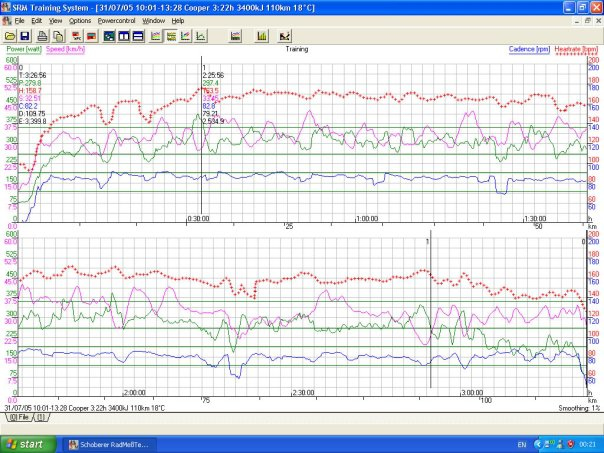
If you know about cycling then here is an SRM powermeter plot of one of my steady rides at the time (if you can enlarge it you can see the figures). The middle 2h30mins at an average power of 297w at an average heart rate of 158bpm, I was also 63kg at the time as you can see in the pic below. That's a fair bit of poke for cycling as I would normally race at 185bpm hr. Sadly I never raced with an SRM on (or good as it would have only been extra weight in a race)..
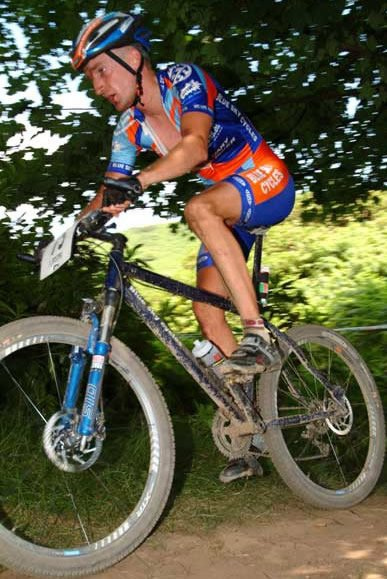
There is quite an ethical debate on the use of these in sports but so far they have not been banned. The arguments against say you have received a sporting benefit from no extra training work or preparation. The arguments for say its just the same as anyone who naturally lives at altitude, are you going to ban people who live at altitude from competing in sport? I think for this reason they are not banned but I'd recommend using one now while you can! By Philip Cooper on Google here.
 Read the article here.
Read the article here. NormaTec MVP System Rental
NormaTec MVP System Rental